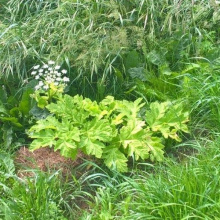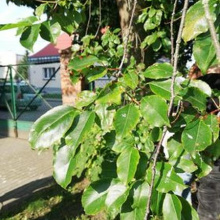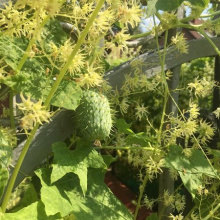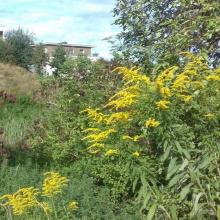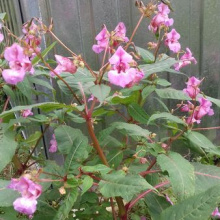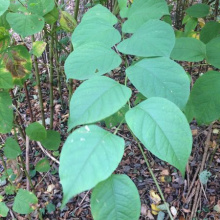Each of us can become a discoverer of areas where plant species alien to our ecosystem appear and contribute to the creation of an interactive Pomeranian database of the distribution of such plants. The Biological Station of the University of Gdańsk invites you to joint actions for the protection of nature.
We often hear about alien animal species threatening native ecosystems, while some species of flora are equally dangerous to our nature. Alien species are organisms that do not occur in natural conditions and have been imported, consciously or not, by humans: - 'We can divide alien plant species into two categories. Those that have been brought with man consciously (we adapt their genotype to local conditions) and those that we bring in unconsciously. Some of the species we have brought are so-called queens of the night. These are plants whose seed is unable to overwinter. Invasive species, on the other hand, have a very clever way of adapting to local conditions. They have the features of a plant predator: they produce seeds in large numbers and move quickly, displacing native species,' explained dr Katarzyna Żółkoś, head of the Biological Station of the University of Gdańsk in Górki Wschodnie.
Canada goldenrod, impatiens glandulifera, Black cherry, E. lobata, and many others - these nice-sounding names of plants, threaten our native ecosystem. Some of them, such as the probably best known Sosnowski hogweed, are a direct threat to humans (burns from this plant are compared to third-degree burns), others, such as goldenrod, are a so-called gut bomb for bees, while others, such as Reynoutria, are a threat to other plant species, taking up huge amounts of water and nutrients.
To fight the 'alien', you first have to recognise it. On the website of the Biological Station of the University of Gdańsk, scientists maintain a database of invasive plants. It is the result of the Aliens Attack - Young Explorers Researching Invasive Plants project, as part of which students from Pomeranian schools found and marked on the map of the Pomeranian Voivodeship the places where alien plant species occur.
- 'The project has ended, but you can still contribute to the creation of an interactive database of such plants. Let's use our summer walks and hikes to observe nature and let's create together a Pomeranian map of alien plant species,' - encouraged dr Katarzyna Żołkoś.
It is enough to register at: https://obcyatakuja.ug.edu.pl (you can do it with a nickname), upload photos of plants and fill in the questionnaire. On the website, there are helpful materials, photos and descriptions, thanks to which we can learn to recognize foreign plant species. The submitted information is verified and the map of these species is updated.
In addition, a special educational trail has been created, dedicated to a fragment of the Sobieszewska Island - Górki Wschodnie. The walk takes about an hour and a half, and along the route, which includes twenty stops, we can watch invasive plants and solve tasks using QR codes (no app needed). This is a great way to spend your free time in the summer, especially that the UG Biological Station also invites you to educational walks in the summer: a guided tour of the dune lab and the dendrological path, and a walk with a botanist: https://stacjabiologiczna.ug.edu.pl/pl/aktualnosci--wakacyjna_oferta_-_zwiedzanie_stacji_i_spacery_botaniczne/
It is worth noting that invasive species occur mainly in areas that have been transformed by humans: - 'If we look at southern and eastern Poland, we have nothing left to fight for. Such species have already colonised natural or ecologically similar systems there. In Pomerania, on the other hand, we are still "a day ahead". We have a chance not to let some "aliens" into our forests and other natural ecosystems,' - concluded dr Katarzyna Żółkoś.
About the project:
The project Aliens attack - young explorers study invasive plants was implemented in 2019-2020 by the Biological Station of the University of Gdańsk. The project was co-financed by the European Social Fund Knowledge, Education and Development. The project was primarily educational and aimed at students from Pomeranian schools. The aim was, among other things, to broaden knowledge on the functioning of ecosystems, the impact of human pressure and the role of invasive species in nature. Nearly 200 students from 12 Pomeranian schools, supervised by researchers from the Biological Station of the University of Gdańsk, helped to develop an interactive database on the distribution of alien plant species in the Pomeranian Voivodeship (as a result of the students' independent work, a database of invasive plant stands in the Pomeranian Voivodeship was created, which includes 528 entries for 24 different species), and nearly 250 students took part in a field game in which they recognised invasive plants and solved puzzles. The project also resulted in a website with helpful information on alien plant species, photos and detailed descriptions. In 2021, the online field game 'Aliens Attack' was made available. Individual access to an interactive database of alien plant species occurring in the Pomeranian Voivodeship is also open at all times. Anyone can register on the website and help update the map with the locations of these plants.
You can find the information you need on the website: https://obcyatakuja.ug.edu.pl
Dr Katarzyna Żółkoś, head of the prof. Fryderyk Pautsch Biological Station at the University of Gdańsk passed away unexpectedly. It is a great loss for the community of our University. She worked with great passion and was involved in educational activities for nature conservation. On June 15, 2021, I interviewed her about invasive plants and the summary of the project: Aliens attack. - Young explorers investigate invasive plants. I did not know that it was the last one. The doctor wanted, in the spirit of citizen science, to promote among the inhabitants of Pomerania the possibility of introducing new locations of invasive plants spreading in our region and the joint creation of a map of these species and an educational path dedicated to the Górki Wschodnie. This article is a tribute and a thank you to her great heart and work for our University and environmental protection. A recent interview with dr Katarzyna Żółkoś can be found on the UG Science Portal

